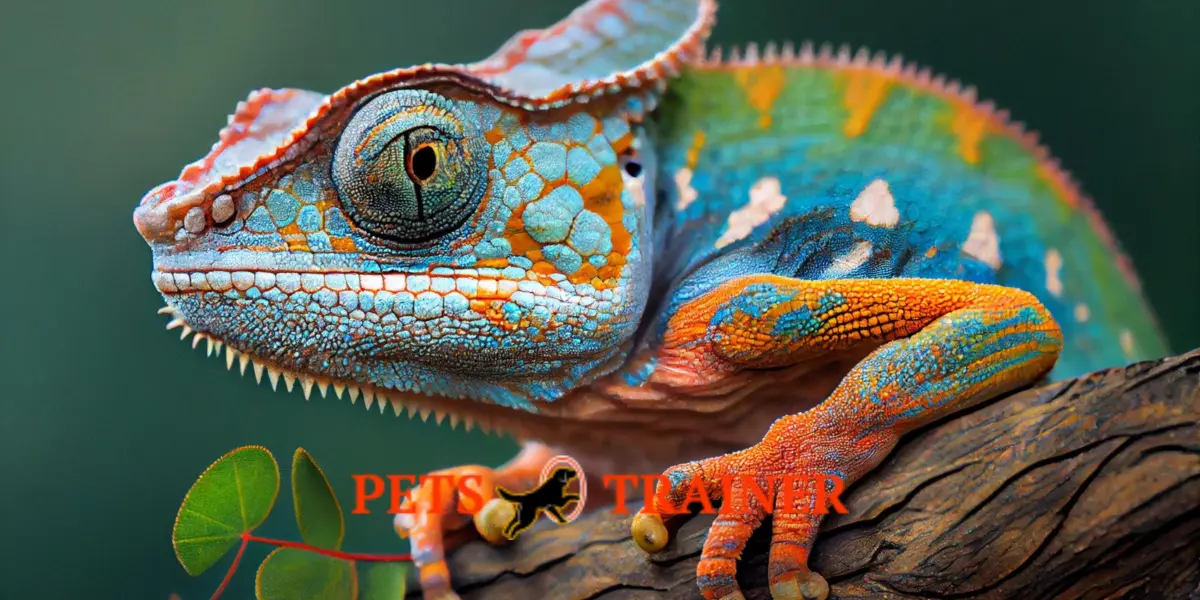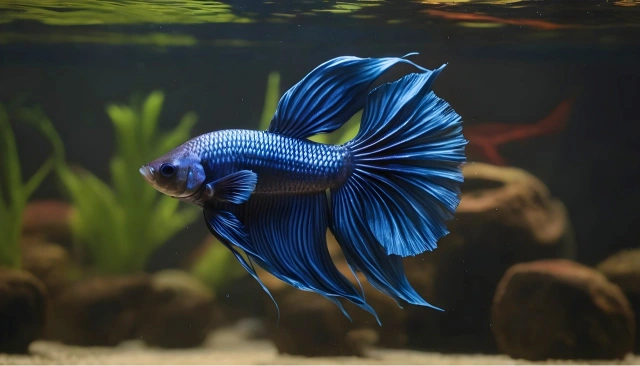Table of Contents
ToggleIn this article, I will explore the world of clicker training for reptiles, delving into its origins, techniques, and incredible results. I will uncover how this positive reinforcement method can teach everything from basic obedience to complex tasks, all while deepening the bond between you and your scaly friend.
Whether you’re a seasoned reptile enthusiast or just curious about alternative pet training methods, join me as I unlock the potential of clicker training for reptiles.
Understanding Clicker Training
Clicker training for reptiles is a fascinating and effective method for teaching these unique creatures new behaviors. While many people associate clicker training with dogs, it’s essential to recognize that reptiles, including lizards and turtles, can also benefit from this positive reinforcement technique.
Reptile owners can establish clear communication with their pets and encourage desired behaviors by using a clicker paired with rewards such as insects or small pieces of fruit.
Benefits of Clicker Training for Reptiles
Clicker training for reptiles offers numerous benefits beyond traditional training methods. Firstly, it allows pet owners to create a positive association with certain behaviors through a clicker sound, which can help shape desirable actions.
Cognitive Stimulation
Clicker training offers a unique way to provide cognitive stimulation and enrichment for these fascinating creatures. By utilizing positive reinforcement and the sound of a clicker, reptiles can be trained to perform various behaviors, such as targeting, agility exercises, and even puzzle-solving tasks. This mental stimulation is entertaining for the reptiles and crucial for their overall well-being.
Clicker training stimulates a reptile’s ability to solve problems and improves its capacity to pick up new skills. This cognitive stimulation can help reduce boredom in captive reptiles and may alleviate stress-related behaviors commonly observed in these animals.
Furthermore, engaging in clicker training sessions with your reptile can allow you to observe their intelligence firsthand. Reptiles are often underestimated in their cognitive abilities, but through clicker training, owners may discover just how capable these creatures are at learning complex tasks. This sheds light on reptiles’ intellectual capacities and provides an avenue for exploration and appreciation of their intelligence.
Bonding and Trust
Clicker training offers a unique bonding and trust-building opportunity between owners and their scaly companions. By using positive reinforcement and the distinct sound of a clicker, reptiles can learn to associate behavior with rewards, thus strengthening the bond between them and their human counterparts.
This form of training allows for clear communication, creating a foundation of trust as the reptile learns to understand what is expected of them in exchange for treats or rewards.
Moreover, clicker training provides an enriching experience for both the reptile and their owner. It stimulates the reptile’s cognitive abilities, keeping them mentally engaged and active while deepening their relationship with their caretaker.
Enrichment
Clicker training can help reduce stress and anxiety by providing them with mental challenges and a sense of accomplishment. As they learn new behaviors through this method, they become more confident and adaptable within their surroundings. This form of enrichment encourages problem-solving abilities and helps replicate natural hunting or foraging behaviors, improving the overall well-being of captive reptiles.
Clicker training offers numerous benefits for enriching captive reptiles by providing mental engagement, reducing stress, and building confidence. Through active engagement in learning activities catered to the demands particular to its species, this interactive method not only improves the quality of life of the reptile but also promotes a greater awareness of its behavior.
Health Benefits
One of the often overlooked benefits of clickreptiles’sng for reptiles is its positive impact on their physical health. By engaging in clicker training exercises, reptiles are encouraged to move and exercise, which can help maintain a healthy weight and muscle tone. This physical activity can also improve these animals’ circulation, digestion, and overall well-being.
Additionally, Reptiles who get clicker training might have a decrease in stress and an improvement in mental acuity. This mental enrichment can directly impact the immune system, leading to stronger resistance against diseases and infections.
As a result, In addition to improving physical health, clicker training for reptiles aids their total wellness by offering the mental and physical stimulation necessary for a healthy existence.
Getting Started with Clicker Training
One crucial aspect of getting started with clicker training for reptiles is choosing the proper reinforcement. While mammals often respond well to food treats, reptiles may be more motivated by other stimuli such as heat or light sources. Experimenting with different forms of positive reinforcement is essential to find what truly motivates your reptile.
Selecting the Right Reptile
Clicker training for reptiles is an effective and rewarding way to interact with scaly companions. When selecting the right reptile for clicker training, one must consider their temperament and intelligence. Certain species, such as leopard geckos and bearded dragons, are known to be curious and eager to learn, making them amenable to clicker training.
It’s cruit Choosing a reptile that is comfortable with human interaction and shows interest in food as a reward is crucial. Additionally, considering a reptile’s natural behaviors can help determine if it will thrive in a clicker-like environment. For example, species like monitor lizards or tegus, which display complex behaviors in the wild, may benefit greatly fromreptile’straining as it allows them to engage their minds and fulfill their instincts.
Ultimately, understanding the specific needs of the reptile you’re interested in is vital when embarking on clicker training adventures. By carefully selecting a compatible reptile for this type of training, you’ll set the stage for an enriching and successful experience that strengthens your bond with your scaly friend while promoting mental stimulation and overall well-being.
Using your voice
Training reptiles with clickers and rewards is a fascinating communication journey between humans and animals. Once your pet starts associating actions with rewards, the real magic begins when you introduce verbal cues. The power of your voice becomes a bridge between their instinctive behavior and intentional response.
Using words to signal desired actions adds depth to the training process, creating a more profound sense of understanding between you and your reptilian companion. Gradually replacing clicks and treat rewards with verbal commands strengthens the bond while further solidifying learned behaviors.
Gathering Supplies
Regarding the clickers, training you’ll reptiles, and gathering the right supplies is crucial to success. First and foremost, A clicker, a little, portable gadget with a distinctive clicking sound, is required. This will serve as your means of communication with your reptile, indicating when they have performed the desired behavior.
Additionally, treats are an essential component of clicker training. Choose high-quality, irresistible treats your reptile will be motivated to work for. It’s critical to select safe and appropriate treats for your specific type of reptile.
In addition to the clicker and treats, having a target stick can be incredibly useful in shaping behaviors and guiding your reIt’se during training sessions. A target stick can be a simple wooden dowel or even a chopstick with a colorful tip that will catch your reptile’s attention.
Establishing a Baseline
Before diving into clicker training for reptiles, Developing a foundational knowledge of your pet’s behavior is crucial. Observing their natural tendencies and responses to reptile stimuli will provide valuable insight into where they are starting from regarding training.
By taking note of their reactions to different environments, interactions with food, and responses to physical touch, you can understand their individual preferences and aversions. Creating a baseline also involves identifying specific behaviors you want to modify or incorporate into your reptile’s routine.
Whether targeting, stationing, or basic movements, pinpointing these desired behaviors will help guide your training sessions and set clear goals for you and your pet. Additionally, establishing reptiles ‘ allows you to make progress over time and adapt your training strategies accordingly.
Introduction to the Clicker
Clicker training has long been recognized as a powerful tool for reptile behavior modification, offering an effective way to communicate with and train these unique animals. The clicker facilitates accurate timing and unambiguous communication by serving as a conduit between the intended behavior and the reward. Its distinctive sound is an immediate marker of the reptile’s correct action, facilitating learning positively and encouragingly.
Introducing your reptile to clicker training can open new avenues of interaction and understanding between you and your pet. It’s not reptiles teaching tricks; it’s also about building trust, strengthening the bond, and providing mental stimulation for your reptilian companion.
With patience, consistency, and an understanding of your reptile’sIt’sividual characteristics, clicker it’sning offers a dynamic way to tap into their cognitive abilities while enriching their environment with purposeful interactions. Clicker training is a versatile method that has exciting results when applied thoughtfully to the training of reptiles.
It fosters engagement by tapping into their innate curiosity and intelligence while establishing clear communication channels between owner and pet. As you embark on this journey with your scaly friend, remember that each reptile is unique in its temperament and learning pace; adaptability is critical in tailoring the training process to suit their individual needs while fostering a more profound connection through fun-filled learning experiences.
Target Training
Clicker training for reptiles is a highly effective and gentle method for shaping desired behaviors in your scaly companions. One of the critical components to getting started with clicker training is target training. This involves teaching your reptile to touch a specified object, such as a stick or a ball, with their nose or another body part. The clicker marks when the reptile successfully feels the target, followed by a reward.
When beginning target training with clicker training for reptiles, it’s essential to start slow and be patient. Reptiles are intelligent creatures but can take time to understand the concept of targeting. Using small, frequent sessions can help keep them engaged and prevent frustration. Ait’sionally, experimenting with different types of targets and finding what motivates your reptile can be crucial in ensuring successful clicker training results.
Clicker training for reptiles through target training offers an enriching way to interact with scaly friends while enhancing their cognitive abilities. By understanding the fundamentals of this technique and remaining persistent in one’s efforts, pet owners can foster positive bonds with their reptilian companions while encouraging mental stimulation and engagement.
Expanding Behaviors
Expanding behaviors through clicker training for reptiles can be a one’s exciting and rewarding journey. Once your reptile has grasped the basics of clicker training, such as targeting a specific object or performing a simple trick, it’s time to expand its repertoire of behaviors.
Start by identifying natural behaviors your reptile exhibits daily, such as climbing, basking, or hunting for food. Use these as building blocks to do more complex tasks, adding a unique flair to your pet’s training regimen.
One approach is introducing new environmental stimuli that encourage your reptile to engage in different activities. For instance, introducing different textures or structures into their living area might encourage kids to discover and engage with their environment in fresh ways.
By gradually shaping these interactions through clicker training, you can guide your pet toward more intricate and diverse behaviors while strengthening the bond between you and your reptilian companion.
Conclusion
In conclusion, Reptiles respond well to clicker training, which has several advantages, including increased mental stimulation and better behavioral ties between owner and pet. Reptile owners can successfully train their animals to perform various behaviors and tricks using positive reinforcement and clear communication.
The adaptable nature of clicker training allows customization to fit the needs and abilities of different reptile species. Clicker training may be a rewarding experience for both the owner and the reptile if it is done with persistence, patience, and a thorough knowledge of the animal’s innate inclinations.
FAQs
Q: What is clicker training for reptiles?
A: Clicker training for reptiles is a positive reinforcement technique that uses a clicking sound to mark desired behavior, followed by a reward.
Q: Can all types of reptiles be clicker trained?
A: Yes, most reptiles can animal’ser trained, including lizards, snakes, turtles, and tortoises.
Q: What are the benefits of clicker training?
A: Clicker training can help improve communication between you and your reptile, enhance their mental stimulation, and make handling and care easier.
Q: How do I get started with clicker training my reptile?
A: Start by introducing your reptile to the clicker sound and pairing it with treats to reinforce positive behaviors.
Q: What kind of treats is suitable for clicker training reptiles?
A: Small pieces of fruits, vegetables, or insects can be used as treats for clicker-training reptiles.
Q: How long does it take to see results from clicker training a reptile?
A: Results may vary depending on the individual reptile, but with consistent practice and patience, you should start seeing progress within a few sessions.

Dr. Usman Bajwa, a dedicated veterinarian with a passion for pets, brings years of expertise to the world of pet grooming. Through his blog, he shares valuable insights and practical tips to help pet owners provide the best care for their furry companions. With a focus on promoting the health and happiness of pets, Dr. Usman articles offer easy-to-follow guidance on grooming techniques. When he’s not writing, you can find him at his clinic or enjoying time with his own beloved pets.




